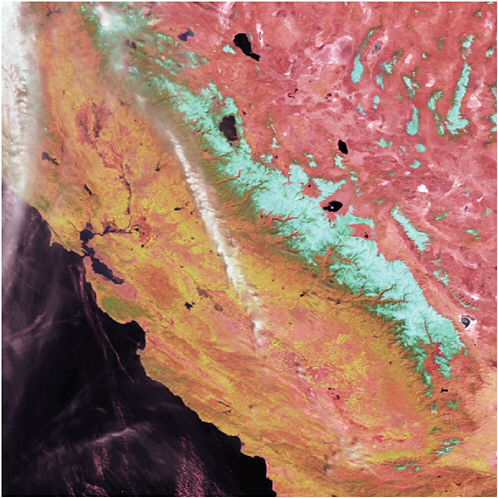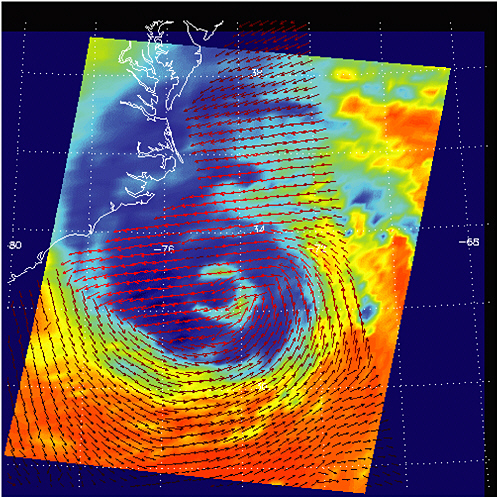
PLATE 1 Hurricane Isabel on September 13, 2003. The red vectors in the image show Isabel’s surface winds as measured by the SeaWinds scatterometer on ADEOS-2, and the background colors show the temperature of clouds and surface, as viewed in the infrared by AIRS. Light blue areas show adjacent cold clouds’ tops associated with strong thunderstorms embedded within the storm. SOURCE: Courtesy of NASA Jet Propulsion Laboratory.
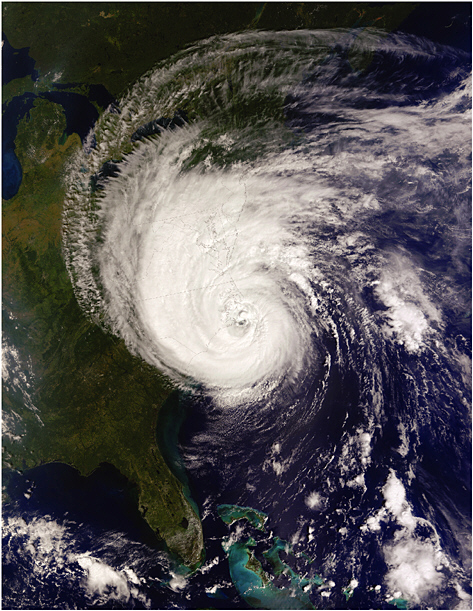
PLATE 2 Hurricane Isabel as it approached landfall on the outer banks of North Carolina on September 18, 2003. The image is a true-color (red-green-blue) NASA image taken by the Moderate-resolution Imaging Spectroradiometer (MODIS)—the research equivalent of the Visible and Infrared Imager/ Radiometer Suite (VIIRS) to be flown on NPP and operationally by NPOESS in three orbit planes (with global coverage every 4 hours) beginning in 2009. SOURCE: Courtesy of NASA Goddard Space Flight Center.
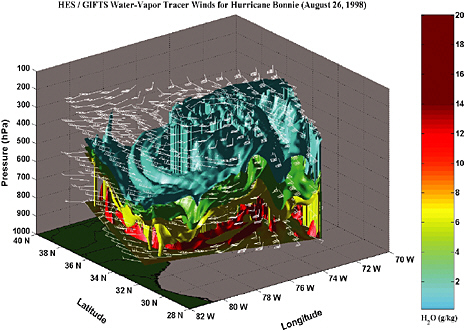
PLATE 3 Example of a future capability to be delivered with the Hyperspectral Environmental Suite (HES) on GOES-R in 2012: four-dimensional water vapor structure and wind profiling, in this case water-vapor tracer winds (the tracking of moisture features on constant-altitude surfaces determined by retrieval analyses) for Hurricane Bonnie (August 26, 1998). This simulation demonstrates the power of hyperspectral atmospheric profiling of temperature, moisture, and winds. Compared with the current operational system, the new capability will provide greatly improved spatial resolution, more rapid temporal refresh, and finer vertical resolution through increased spectral information content. SOURCE: Bormin Huang, University of Wisconsin-Madison.

PLATE 4 Archive growth during the 1990s and 15-year projected archive growth. SOURCE: NOAA, 2001, The Nation’s Environmental Data: Treasures at Risk, Report to Congress on the Status and Challenges for NOAA’s Environmental Data Systems (A. Hittelman and I. Hakkarinen, eds.), U.S. Department of Commerce, National Oceanic and Atmospheric Administration, August 2001, p. viii. Available online at http://www.ngdc.noaa.gov/noaa_pubs/treasures.shtml.
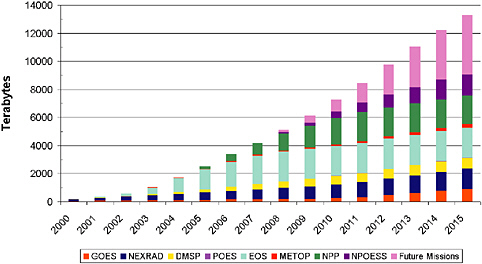
PLATE 5 Major systems archive growth from 2000 to 2015. SOURCE: NOAA, 2001, The Nation’s Environmental Data: Treasures at Risk, Report to Congress on the Status and Challenges for NOAA’s Environmental Data Systems (A. Hittelman and I. Hakkarinen, eds.), U.S. Department of Commerce, National Oceanic and Atmospheric Administration, August 2001, p. 16. Available online at http://www.ngdc.noaa.gov/noaa_pubs/treasures.shtml.
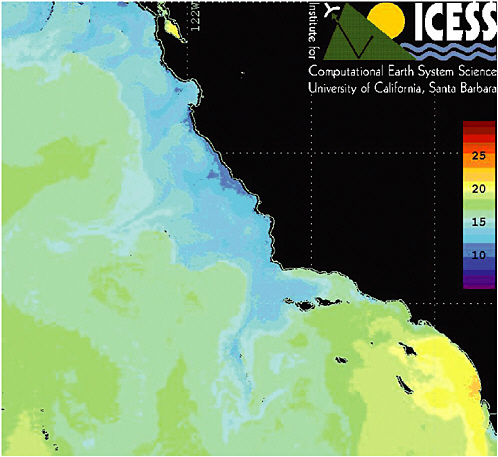
PLATE 6 Sample Advanced Very High Resolution Radiometer (AVHRR) composite (5-day) mean sea-surface temperature, Pacific Ocean, California, September 11, 2002 (the color bar is temperature in degrees Celsius). Image courtesy of the Institute for Computational Earth System Science (ICESS), University of California, Santa Barbara.
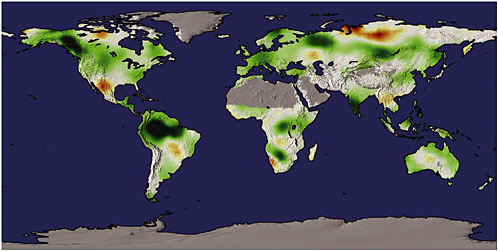
PLATE 8 Change in global terrestrial net primary production from 1982 to 1999. SOURCE: Reprinted with permission from R. Nemani, C. Keeling, H. Hashimoto, W. Jolly, S. Piper, C. Tucker, R. Myneni, and S. Running. 2003. “Climate-Driven Increases in Global Terrestrial Net Primary Production from 1982 to 1999,” Science 300:1560-1563. Copyright 2003 AAAS.
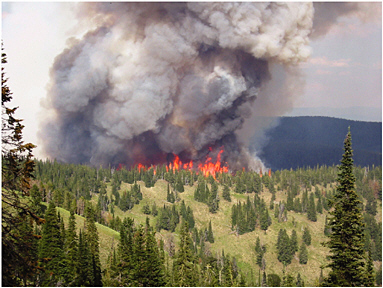
PLATE 9 The MODIS Rapid Response system (http://rapidfire.sci.gsfc.nasa.gov/) has proven effective as a decision support tool for fighting large forest fires, such as the one pictured here in Montana. SOURCE: Courtesy of Lloyd Queen, University of Montana.
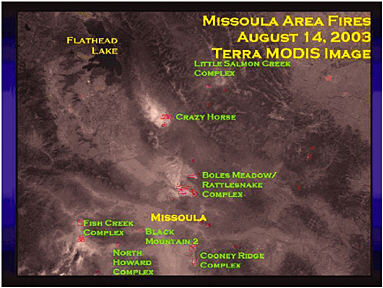
PLATE 10 Terra MODIS (Moderate-resolution Imaging Spectroradiometer) satellite image of fires in the area around Missoula, Montana, August 2003. SOURCE: Courtesy of Lloyd Queen, University of Montana.

